It looks like fish, but does it taste like it? Imitation tuna almost breaks our minds 【Taste test】
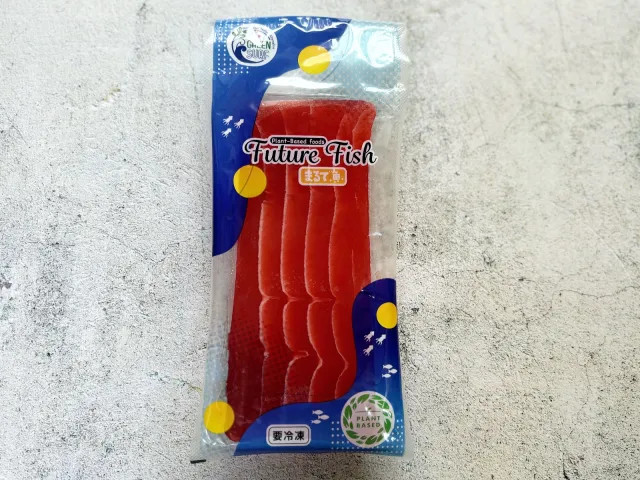
Try this fish substitute if you’re trying to cut back on seafood!
The world has come a long way in terms of meat substitutes, with meatless beef bowls, soy-based fried ham cutlets, and plant-based burgers readily available at restaurants all over the world. But what we haven’t seen is a good meatless substitute for fish. At least, not until now.
We happened to be shopping around online when we found this “Future Fish Marude Fish Maguro” (“I can’t Believe It’s Not Fish! Tuna”), which looked exactly like real raw tuna. Of course, being big sushi fans, we absolutely had to try it.
*Note: This article contains an affiliate link, so clicking on it could lead to a portion of sales coming back to SoraNews24.
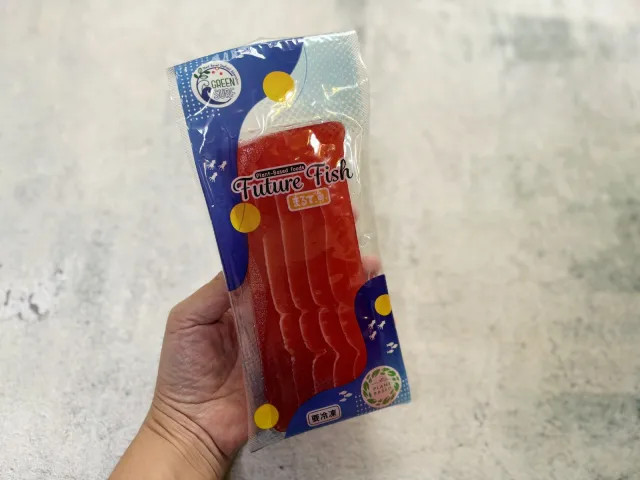
Wrapped tightly in a clear vacuum-sealed pack, the Marude Sakana Maguro arrived at our door frozen, so we put it in the fridge to defrost for about a day. When it was ready for consumption, we removed it from its pouch and patted it dry with paper towels. The result was so like a real slab of raw tuna meat, we couldn’t believe it wasn’t!
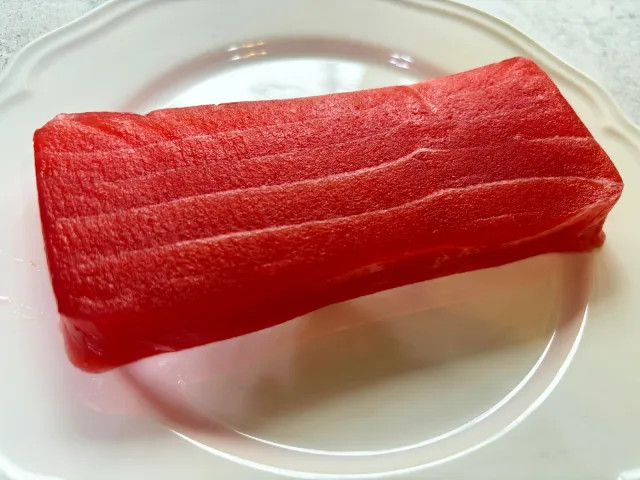
It was a deep red color with white sinew lines and a slight luster that made it look very convincing. We couldn’t help but wonder what it could be made of, so we checked out the ingredients. The first three were konjac flour, salt/gelling agent, and trehalose, an ingredient to add sweetness and enhance flavor.
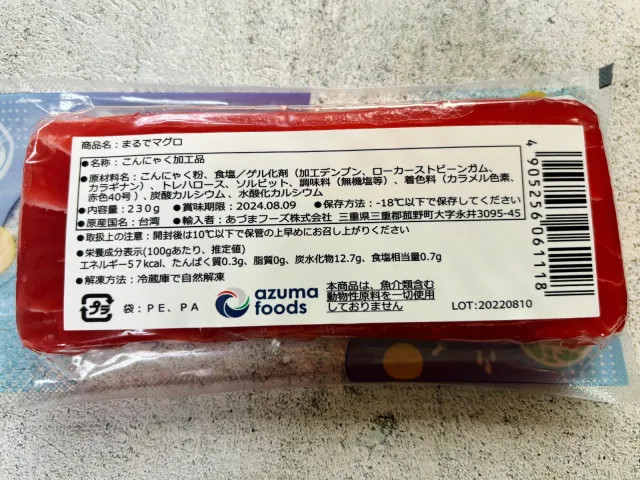
Konjac flour…interesting. Konjac is a starchy root vegetable, which in Japan is ground into a flour and used to make the jelly-like slabs popular in Japanese cooking known as “konnyaku”. The use of it in a tuna substitute got us wondering if it was going to taste just like konnyaku instead of tuna.
Only one way to find out!
We decided to prepare it just like we would ordinary fresh tuna: as sashimi. When we cut it into slices, it maintained its form, just like real tuna would. It was so convincing we truly wouldn’t believe it was made from konjac flour if we didn’t already know.
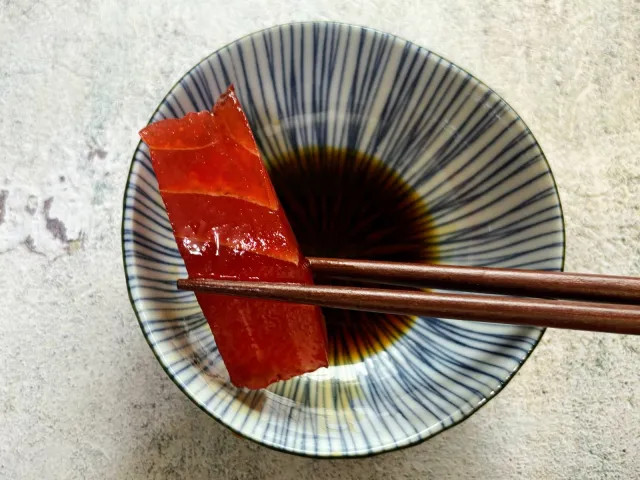
Like real tuna sashimi we dipped it in soy sauce before tasting.
Because it looked so much like tuna sashimi, we were physically and mentally prepared to eat tuna sashimi, even though we knew it wasn’t. So while the texture was pretty close to what we expected, the flavor was a little bit jarring. It was missing that sort of viscous umami of tuna that we know and love, so it took our taste buds a moment to catch up to what our brain knew: that this was not, in fact, real tuna.
It was quite a strange experience.
Sashimi-style Marugoto Sakana Tuna was a bit of a bust, so we decided to try a method of preparation recommended by Green Culture, the product’s retailer. “Eat it together with avocado in a Zuke-don (Marinated Fish Bowl), or in a California Roll!” they said on the product’s page.
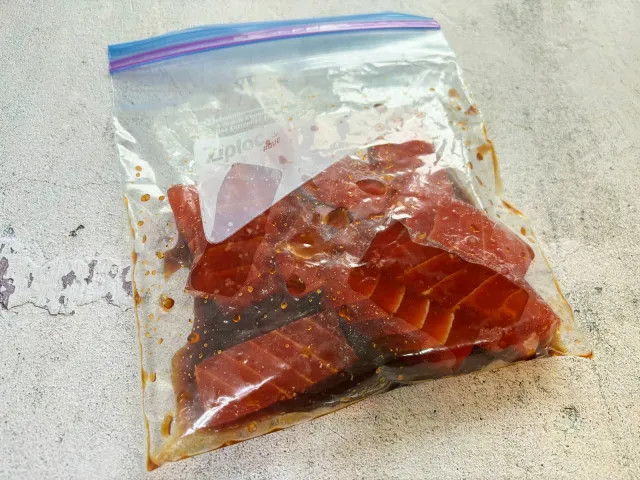
Zuke-don it is! We marinated our fishless tuna in soy sauce, warmed-up mirin, sake, and garlic for 30 minutes. Then we placed it atop some white rice alongside slices of avocado.
As before, its appearance really made us pause. How could this not be real tuna?!
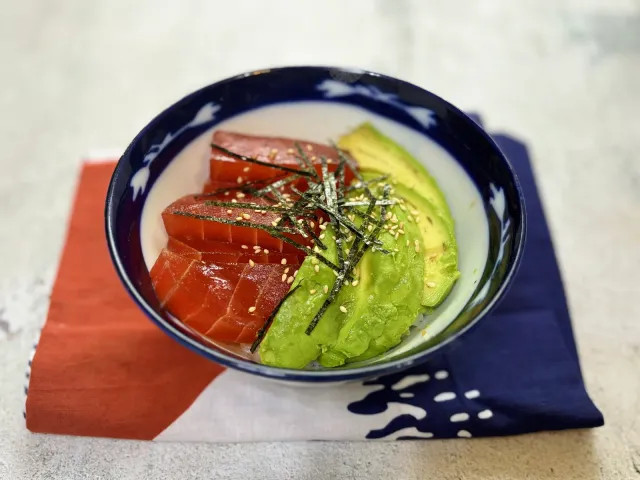
A taste test revealed that Zuke-don is a far better way to eat Marugoto Sakana Maguro. With the sauce thoroughly permeating the fake meat, it was much harder to distinguish this replacement from real tuna. The avocado pairing made a big difference too. It was totally strange, but definitely delicious.
This fish substitute would work perfectly in a Hawaiian poke bowl, or prepared like Korean yukhoe (seasoned raw beef) without the egg, or even in temaki, rolled into a lose cone of seaweed with other sushi ingredients. As we were munching away, we dreamed up lots of ways to use it!
You can find Marude Sakana Maguro from the Green Culture Online Store for 990 yen (US$6.57) per package, not including shipping. If you’re on a plant-based diet or can’t eat fish, raw or cooked, this could be a great option to add to your repertoire! Just be aware that unlike real tuna, it has very little protein in it, so be sure to get your daily requirements from elsewhere.
Green Culture Online also has other plant-based products, including Marude Sakana Salmon, Marude Negitoro (raw tuna and onions), and meatless chicken nuggets and sausage, so it could be a good resource to expand your weekly meal plan. And if you’re trying to cut back on meat, definitely also check out this Tokyo restaurant that serves food that Buddhist monks eat. It almost converted our meat-loving reporter Mr. Sato to a vegetarian!
Images © SoraNews24
● Want to hear about SoraNews24’s latest articles as soon as they’re published? Follow us on Facebook and Twitter!
Credit:

0 comments:
Post a Comment